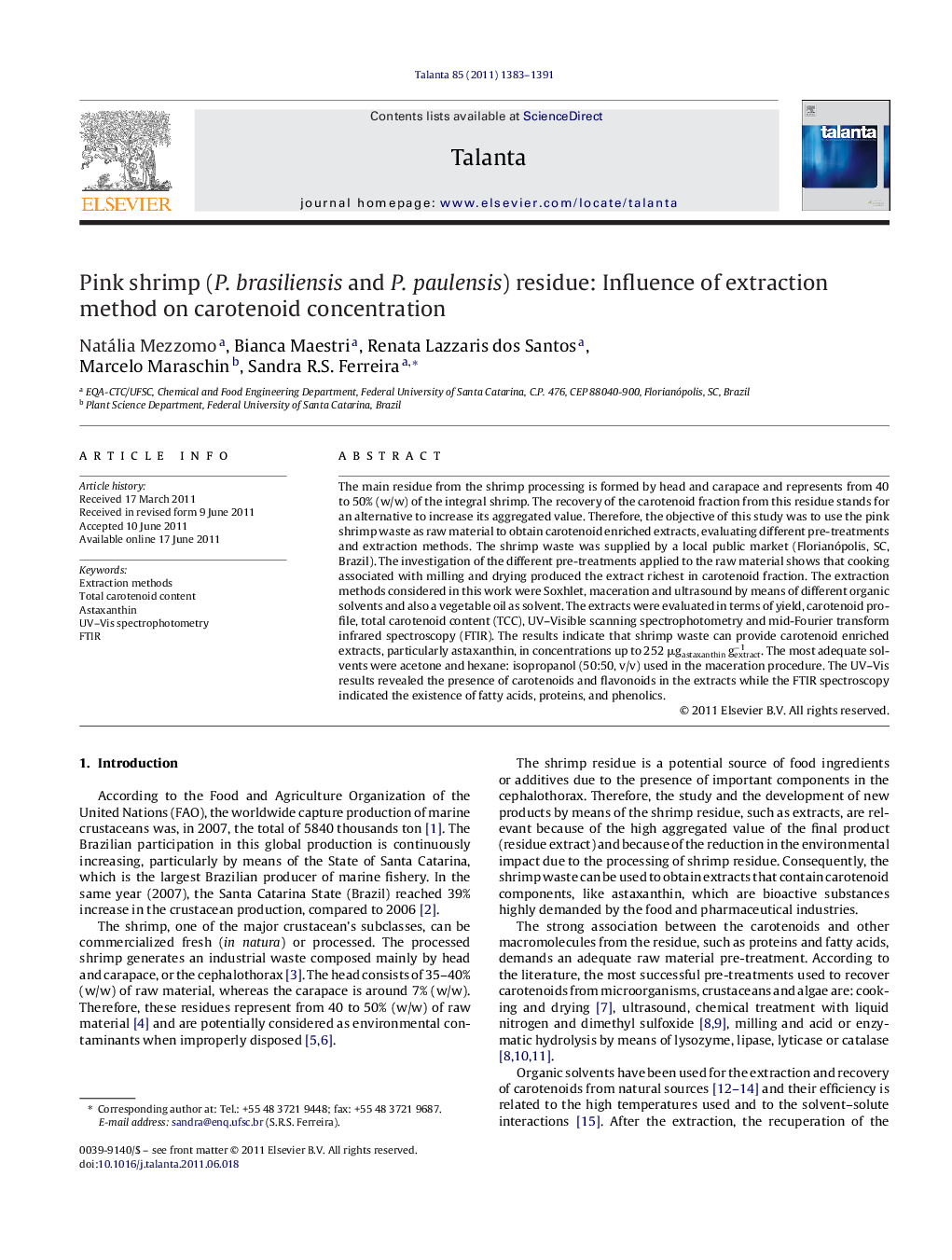| Article ID | Journal | Published Year | Pages | File Type |
|---|---|---|---|---|
| 10560497 | Talanta | 2011 | 9 Pages |
Abstract
The main residue from the shrimp processing is formed by head and carapace and represents from 40 to 50% (w/w) of the integral shrimp. The recovery of the carotenoid fraction from this residue stands for an alternative to increase its aggregated value. Therefore, the objective of this study was to use the pink shrimp waste as raw material to obtain carotenoid enriched extracts, evaluating different pre-treatments and extraction methods. The shrimp waste was supplied by a local public market (Florianópolis, SC, Brazil). The investigation of the different pre-treatments applied to the raw material shows that cooking associated with milling and drying produced the extract richest in carotenoid fraction. The extraction methods considered in this work were Soxhlet, maceration and ultrasound by means of different organic solvents and also a vegetable oil as solvent. The extracts were evaluated in terms of yield, carotenoid profile, total carotenoid content (TCC), UV-Visible scanning spectrophotometry and mid-Fourier transform infrared spectroscopy (FTIR). The results indicate that shrimp waste can provide carotenoid enriched extracts, particularly astaxanthin, in concentrations up to 252 μgastaxanthingextractâ1. The most adequate solvents were acetone and hexane: isopropanol (50:50, v/v) used in the maceration procedure. The UV-Vis results revealed the presence of carotenoids and flavonoids in the extracts while the FTIR spectroscopy indicated the existence of fatty acids, proteins, and phenolics.
Related Topics
Physical Sciences and Engineering
Chemistry
Analytical Chemistry
Authors
Natália Mezzomo, Bianca Maestri, Renata Lazzaris dos Santos, Marcelo Maraschin, Sandra R.S. Ferreira,
